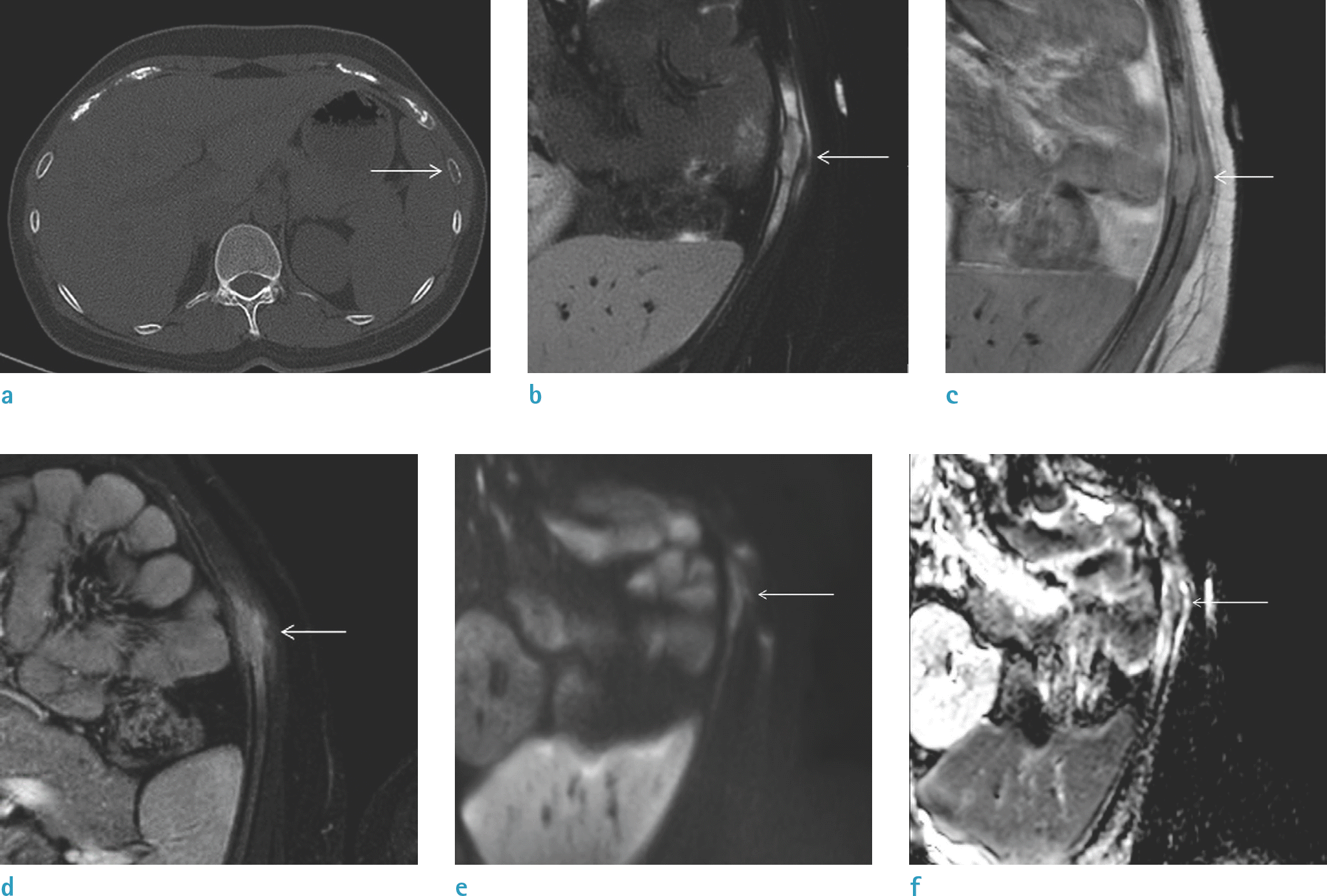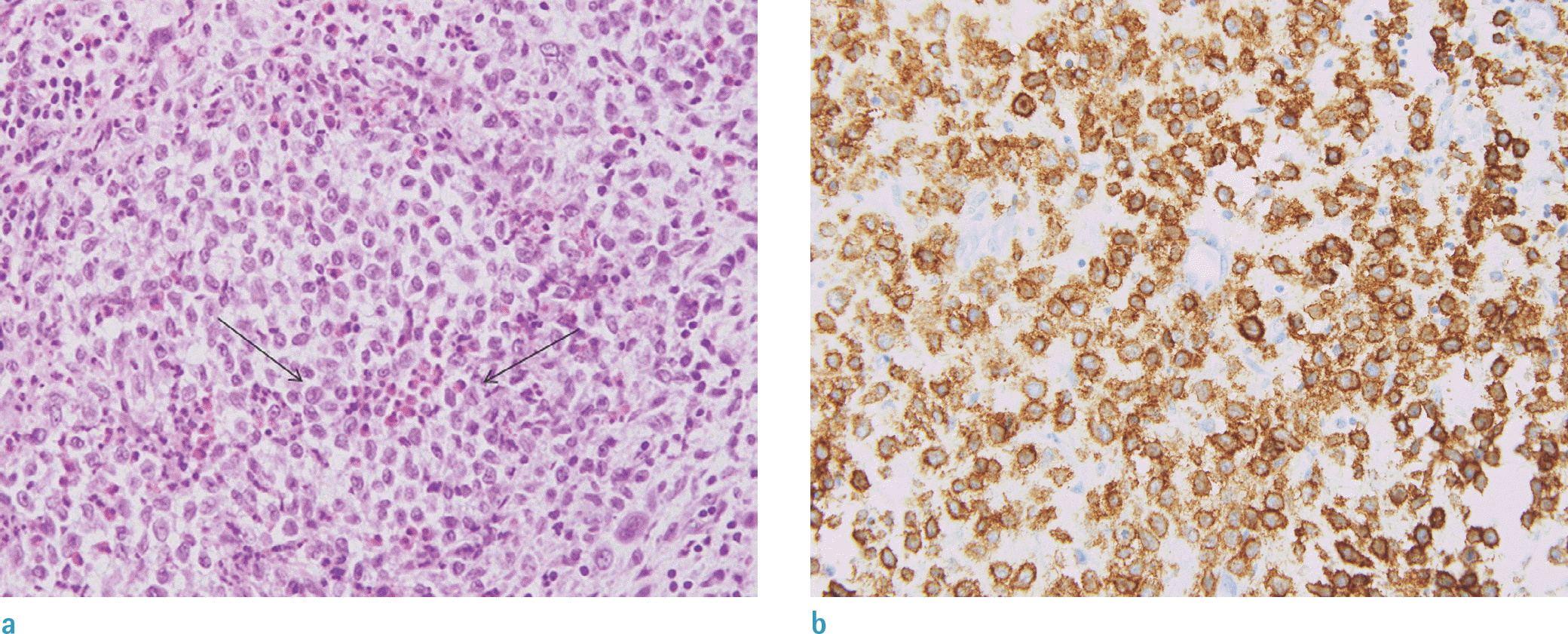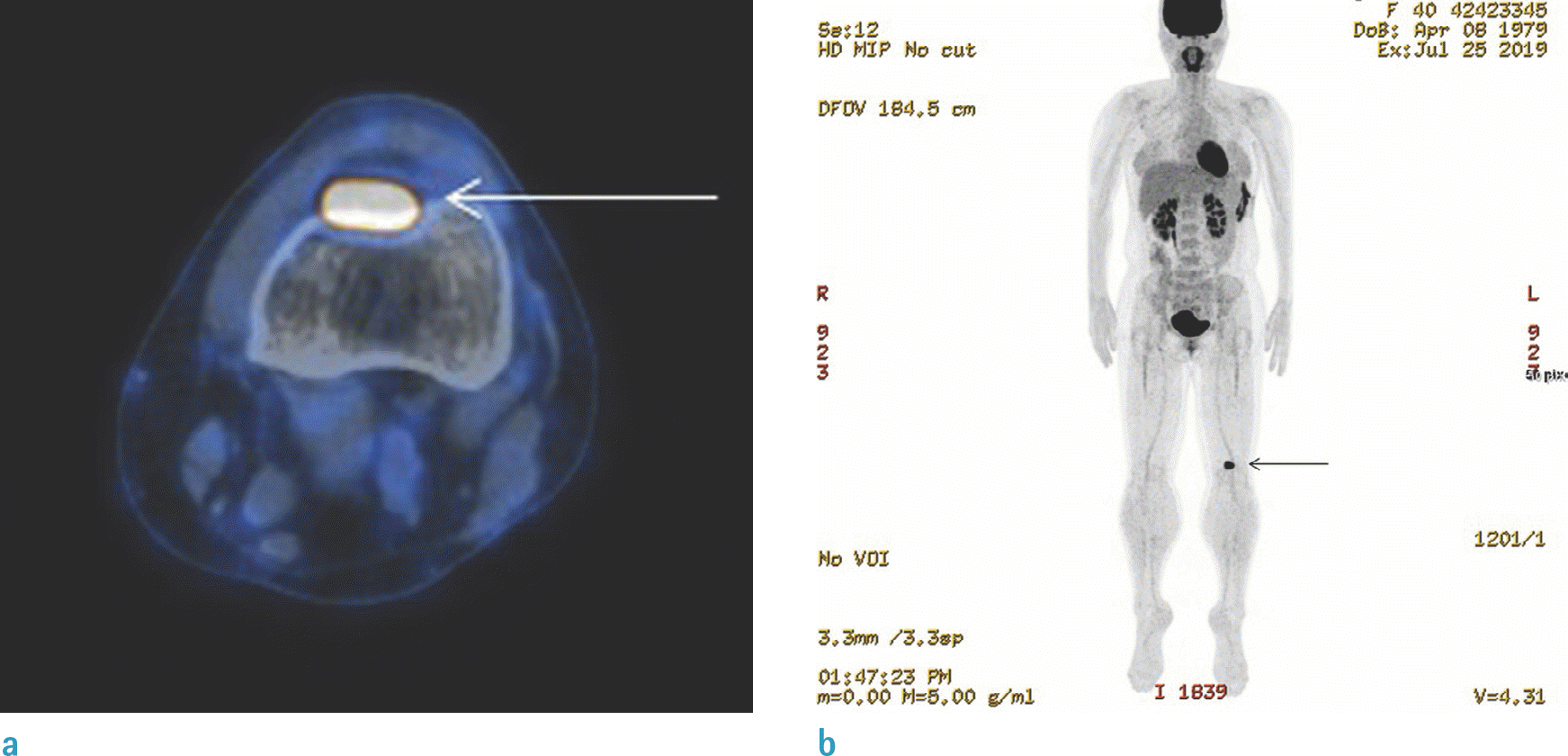Abstract
Langerhans cell histiocytosis (LCH) is generally considered a childhood disease that exhibits various nonspecific clinical and radiological manifestations that mimic infection or malignancy. Here, we present a case of LCH involving the rib in an adult patient. CT and MRI revealed an expansile lytic lesion with periosteal reaction on the left 8th rib, suggesting a malignant bone tumor. Surgical resection was performed and histopathological examination was consistent with LCH. Owing to its rare occurrence in adults and nonspecific aggressive features, LCH should be included in the differential diagnosis of an aggressive-appearing rib lesion in both adults and children.
REFERENCES
1.Kim SH., Choi MY. Langerhans cell histiocytosis of the rib in an adult: a case report. Case Rep Oncol. 2016. 9:83–88.

2.Favara BE., Feller AC., Pauli M, et al. Contemporary classification of histiocytic disorders. The WHO Committee on Histiocytic/Reticulum Cell Proliferations. Reclassification Working Group of the Histiocyte Society. Med Pediatr Oncol. 1997. 29:157–166.
3.Zaveri J., La Q., Yarmish G., Neuman J. More than just Langerhans cell histiocytosis: a radiologic review of histiocytic disorders. Radiographics. 2014. 34:2008–2024.

4.Baumgartner I., von Hochstetter A., Baumert B., Luetolf U., Follath F. Langerhans‘-cell histiocytosis in adults. Med Pediatr Oncol. 1997. 28:9–14.

5.Stull MA., Kransdorf MJ., Devaney KO. Langerhans cell histiocytosis of bone. Radiographics. 1992. 12:801–823.

6.Wester SM., Beabout JW., Unni KK., Dahlin DC. Langerhans’ cell granulomatosis (histiocytosis X) of bone in adults. Am J Surg Pathol. 1982. 6:413–426.
7.Stockschlaeder M., Sucker C. Adult Langerhans cell histiocytosis. Eur J Haematol. 2006. 76:363–368.

8.Islinger RB., Kuklo TR., Owens BD, et al. Langerhans’ cell histiocytosis in patients older than 21 years. Clin Orthop Relat Res. 2000. 231–235.

Fig. 1.
Forty-year-old female patient with LCH on the left 8th rib. (a) Axial CT image of the chest shows an expansile osteolytic lesion (arrow) with cortical thinning and disruption at the left 8th rib. (b) Axial T2-weighted image with fat saturation shows an intramedullary high-signal intensity mass (arrow) with surrounding soft tissue edema. (c) Axial T1-weighted image shows a low-signal intensity mass (arrow). (d) Axial T1-weighted image with fat suppression after gadolinium administration shows infiltrative enhancement (arrow). Diffusion restrictionis not clearly visible on the (e) axial diffusion-weighted image (DWI) and (f) axial apparent diffusion coefficient map (ADC map) (arrows).

Fig. 2.
Histopathological examination of the rib mass. (a) Hematoxylin and Eosin (× 400) staining reveals Langerhans cells with ovoid nuclei and occasional nuclear grooves in a mixed inflammatory background with prominent eosinophilia (arrows). (b) Immunohistochemical staining (× 400) is positive for CD1a.





 PDF
PDF ePub
ePub Citation
Citation Print
Print



 XML Download
XML Download